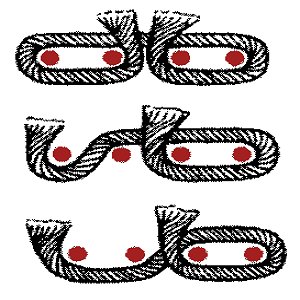Welcome to the Fine Rug Collection blog
The Making of a Hand-Knotted rug
Have you ever wondered how an Oriental rug is actually made? There are so many components that operate in tandem with the creation of these handmade beauties. The materials utilized; the techniques of weaving across the weft, warp and pile; the dyeing and types of dye incorporated; layering knot after knot into a finely grafted creation. There are several cogs in the creative process of an Oriental rug. While the above video is a fantastic resource, we want to give you a quick written guide that peers into the multifaceted world of Oriental rugs.
Materials
First thing's first: the actual materials that will end up composing an Oriental rug. Materials are broken down into three specific items: Wool, Cotton, and Silk. If you're wondering what each material's role in the rug's composition is, look no further.
Wool
- The most common material composing the rug's pile
- Quality of the wool is dictated by the sheep it's harvested from, climate and age
- Harvested every spring and fall
Cotton
- Most commonly utilized in the rug's weft and/or warp
- Tolerates more tension than wool, allowing for it to be manipulated in more ways than one
Silk
- Rarest material that is sometimes used in an Oriental rug
- Normally employed as a "highlight" for the rug, centering around certain designs or motifs
- If a rug has silk, you can expect it to be extremely fine
Weaving Process
Those materials listed above? Once they're placed into the thorough undertaking that is making an Oriental rug, they're spun. The art of spinning itself is carried out on a spinning wheel by hand. The materials are spun and spun until every thread of these materials, regardless of their placement, forms a twist. The purpose of the twist is to allow these materials to actually be usable; after all, you can't take something like wool, silk or cotton and thread it into a rug. No, instead the materials are given the proper means so that they can be melded and molded freely by its weaver.
Dyes
Before the rug is knotted and starts to take form, further preparations must be taken. These next steps layout the framework in order to flesh out an Oriental rug's flush of detail: dye. With the wool, cotton or silk spun, dye is applied and left out in the sun in order to dry.
The dyes employed can come in two primary forms: Vegetal or Synthetic.
Vegetal sounds very similar to the word vegetable, and rightly so. Vegetal dyes harness greenery, plant life and even insects in order to manifest several different pigments. There are all kinds of shades that can spawn from a Vegetal dye's diverse approach: yellows from plants, reds from roots, even black from acorns and apples. In the end, any application of a Vegetal dye gives the finished product a natural touch.
On the other end of the spectrum are Synthetic dyes, which is rather straightforward in their presentation but complicated in their composition. Synthetic dyes can embody a wide range of hues and tones. The difference between Synthetic and Vegetal however is that Synthetic dyes can interchange from natural to artificial. They're so well crafted, especially in this modern age, that its difficult for even the most seasoned carpet owner to differentiate the too.
Whether your rug presents itself with Vegetal or Synthetic dyes doesn't make any of a difference. Either way, the presentation of color within an Oriental rug is one of a kind and irreplacable.
Knots


When all is said and done, with every part in place, it's time to begin the most arduous task involved in the creation of an Oriental rug. You may perceive this meticulous step by step process already hefty and full of thorough operations. What if I told you this wasn't even half the work required for an Oriental rug?
Well, that's because it isn't. The whole procedure has been a thorough tradition for centuries. The knotting of an Oriental rug is the longest, yet most rewarding aspect in its creation. Likewise, it's also the most difficult and time consuming aspect in the grand scheme of things as well. Knotting an Oriental rug isn't even left to one singular person--several talented forgers gather around a loom and put the rug together piece by piece.

From the pile, to the warp, to the weft, the rug is constructed day after day. The amount time it can total is upwards of a year--a year!
Think of the degree of labor going into this monthly endeavor as well. Barehanded twirling one knot under another, over another, under another, over another. A single square inch of a rug can house over 100 knots for an immensely fine weave.
The entire operation ends with a handmade beauty that will never have its match. No two Oriental rugs ever look the same for a reason. The amount of love, care and hard work that's poured into every single one of these beauties is incomparable across the artistic world.
 1-(781)-562-0859
1-(781)-562-0859